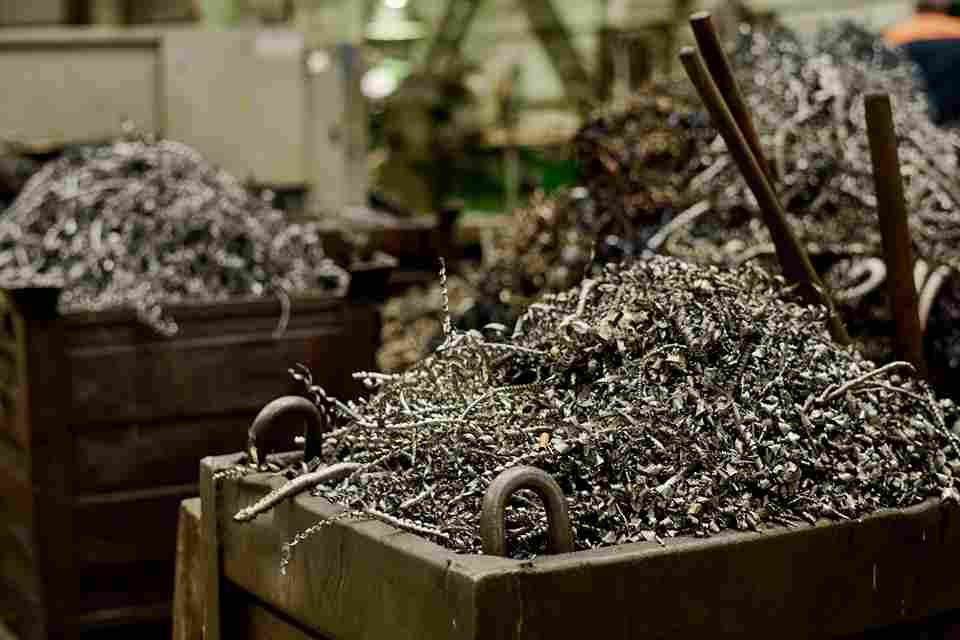How can a material as energy-intensive to extract as metal be made sustainable? The solution lies in reuse, because recycling metal saves a large amount of resources and thus actively contributes to environmental protection. We’ll take a closer look at how exactly this works and what types of metal recycling there are.
Metal: supporting elements for industry and everyday life
Metal is omnipresent in our lives. This applies both to industry, with its machines and components, and to a large number of objects that we use every day – from clothes racks to bicycles and electronic devices. The material has many advantages – it is stable, durable, electrically conductive and easy to shape and reshape.
What is advantageous in metal processing and the use of finished products, however, also has a downside in the production or mining of metal as a raw material: The extraction of iron ore or bauxite, from which aluminum is made, is often accompanied by necessary practices such as deforestation, which are anything but beneficial for the environment. And because metallic raw materials are extracted from the earth’s surface, they are not renewable, unlike renewable raw materials.
But they are certainly recyclable – and often to a very high degree. Let’s take a look at the potential of recycled metal as a sustainable material.
How can metal be recycled?
How can metal be recycled in a sustainable way? The recycling process first and foremost requires correct waste separation so that the different types and alloys can be collected and processed separately. Using magnets, lasers and X-rays, the scrap metal is sorted and pressed into cubes, then crushed, cleaned and melted down before new products are made from it.
Leftovers from metal production are not neglected in recycling either. For example, the so-called punching waste that remains when products are punched out is returned to the cycle in order not to waste valuable resources. This is also referred to as new scrap because the material is of high quality and has excellent purity.
Without the addition of scrap metal, it would not be possible to produce many things, since in steel production, for example, the addition of scrap is not only useful but even necessary.
The benefits of metal recycling
As with plastic recycling, the proper disposal, collection and recycling of metal that has exceeded its useful life has a number of positive effects. This applies to industry as well as consumers.
The most important advantages include the following.
Conservation of resources:
Instead of environmentally damaging mining, metal recycling enables the continued use of resources that have already been extracted without leaving lasting traces on the planet that could harm the climate and people. The direction is right: 80 percent of the steel ever produced worldwide is still in the material cycle and is being reused.
Reduced energy consumption:
Not only is the energy required to mine metallic raw materials eliminated, but energy is also saved during production itself by adding scrap metal, because the melting point of the iron ore being melted down is reduced by adding scrap metal.
Avoiding CO2 emissions:
The reduced energy consumption also means a better CO2 balance, because the recycling process enables significant savings in carbon dioxide emissions. An example? In 2018, the CO2 savings in the EU through the use of steel scrap amounted to around 93.8 million tonnes – equivalent to all car traffic in France, Great Britain and Belgium combined.
Unlimited recycling without loss of quality:
Metals such as steel or aluminum can be recycled as often as you like without any loss of quality. This means less waste is generated and used products such as a bicycle frame may one day even be turned into a wind turbine.
Less dependence on imports:
The Australia produces only a very small proportion of metal raw materials itself; most are imported from other continents. A focus on metal recycling can both reduce risky dependencies and minimize resource-intensive transport routes.
Why is scrap metal recycling important in Melbourne?
Recycling metal waste begins with selective waste collection, which is a priority not only for the population but also for industrial players. In addition to responsible collection, it is also important that the waste recycling system works as a whole. After the metal waste has been transported from the collection points, it is sorted and sent to recycling plants. The process varies depending on the type of scrap.
There are many reasons for metal recycling Melbourne. In addition to protecting the environment, the depletion of ore deposits, the constantly increasing mining costs and the high additional costs in the production and processing of metals make the recycling of metal waste necessary. This step not only saves raw materials, but also energy.
When recycling metal waste, the different types of metal are sorted either mechanically or by hand. After sorting, the scrap metal is shredded, cleaned of various impurities and then transported to smelters where it is melted down. The different metals are then transported in blocks from the smelter to the production line where they are reused. Processing is carried out using different methods, such as forging, rolling and pressing.
Conclusion:
Metal is not only versatile and durable, but through consistent recycling it can also be described as a model student among sustainable materials. Recycling metal has a number of advantages and is therefore worthwhile for everyday objects as well as in the steel industry and in metal processing companies.
The conscious use of resources and the avoidance of unnecessary waste are very important to us, which is why we always keep a close eye on it. You can find out more about our high-quality manufacturing process here .

